We were only in Riobamba for a day but I just knew I had to try and see the highest mountain in Ecuador, Chimborazo. Even though it was hidden behind layers of cloud, late afternoon weather patterns in the Andes can change rapidly. So I asked the manager of the front desk at our hotel if a taxi driver could take us to a good view point with a possible chance to take good pictures of the snow covered volcano. This was a last minute request on a Sunday afternoon, not the best plan in the world. But, about a half hour later, our guide for the afternoon, Angel, pulled up in his bright yellow taxi cab and my friend Beth and I headed out to discover the countryside surrounding Riobamba.
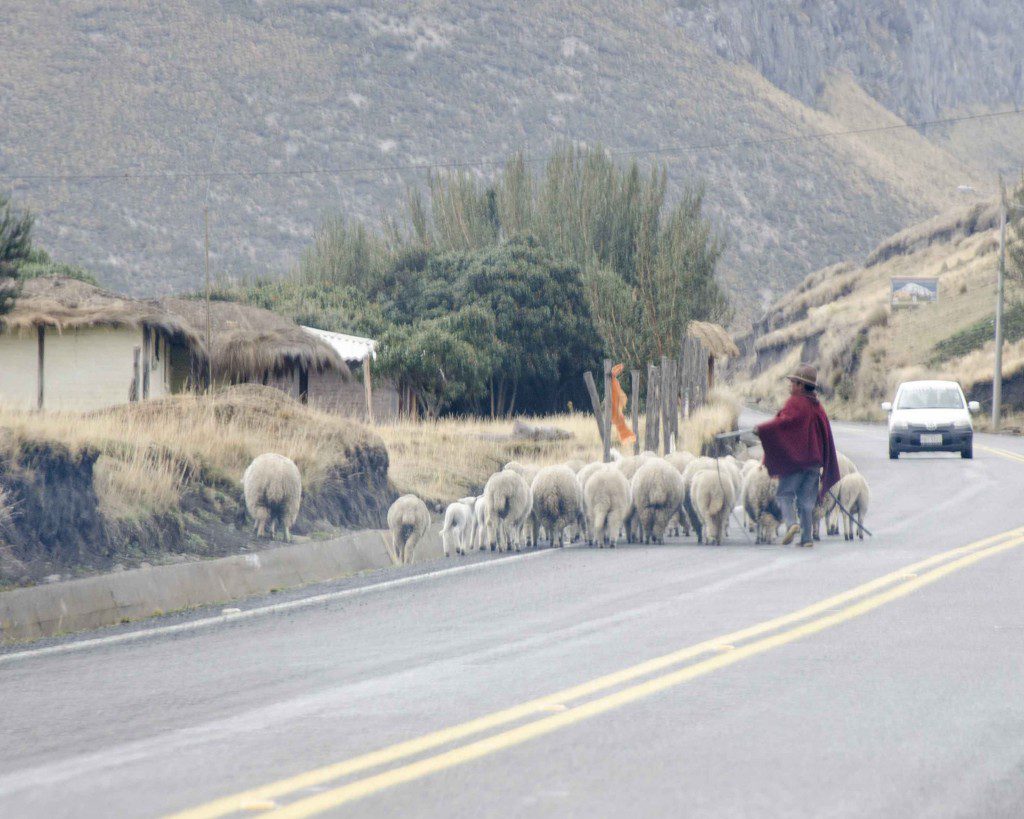 We headed straight out of town to the road that goes up the mountain itself. Angel told us that we could be at the entrance to the hiking trail to the refugio in about 45 minutes. Of course, that would be without stopping for pictures. And stop for pictures we did – the paved road meanders through small villages where locals still make a living from the mountain, most by herding sheep, cattle, and llamingos (the local word for the alpacas and llamas that thrive in the high paramo). Rolling foothills were a patchwork of green pastures, golden long stem grasses, and plowed volcanic soil the color of well-brewed coffee.
We headed straight out of town to the road that goes up the mountain itself. Angel told us that we could be at the entrance to the hiking trail to the refugio in about 45 minutes. Of course, that would be without stopping for pictures. And stop for pictures we did – the paved road meanders through small villages where locals still make a living from the mountain, most by herding sheep, cattle, and llamingos (the local word for the alpacas and llamas that thrive in the high paramo). Rolling foothills were a patchwork of green pastures, golden long stem grasses, and plowed volcanic soil the color of well-brewed coffee.
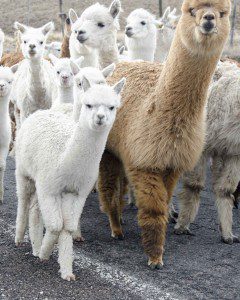 As we drove higher, the green pastures disappeared and were replaced by the dull browns and grays of what looked to be a high desert scrub. Some plants that we have seen on other high mountain tops, like the flowering bush chuquirahua, grew but very sparsely. Yet the locals still took their llamingos to eat the grasses from this dry place. In fact, as we were snapping pictures along side the road next to these high altitude pastures, an elderly woman brought her huge herd of alpacas down the mountainside onto the main highway. A small boy followed at the rear, making sure any stray animals made it back home as well. He gave us a huge grin as we took photos, even turning around to make sure we were still interested after the animals had already walked by.
As we drove higher, the green pastures disappeared and were replaced by the dull browns and grays of what looked to be a high desert scrub. Some plants that we have seen on other high mountain tops, like the flowering bush chuquirahua, grew but very sparsely. Yet the locals still took their llamingos to eat the grasses from this dry place. In fact, as we were snapping pictures along side the road next to these high altitude pastures, an elderly woman brought her huge herd of alpacas down the mountainside onto the main highway. A small boy followed at the rear, making sure any stray animals made it back home as well. He gave us a huge grin as we took photos, even turning around to make sure we were still interested after the animals had already walked by.
 A little further up the road and the terrain changed once again. Parts of the landscape looked more like the moon than our own planet earth. Undulating hills were stark with barely any vegetation covering the sandy ground. A few vicuña broke up the landscape, their long necks occasionally popping up from near constant grazing. The vicuña are peculiar animals. Clearly, they are related to llamas and alpacas but they are not domesticated. When two animals stand rear to rear, they look like a push-me pull-me from Doctor Doolittle.
A little further up the road and the terrain changed once again. Parts of the landscape looked more like the moon than our own planet earth. Undulating hills were stark with barely any vegetation covering the sandy ground. A few vicuña broke up the landscape, their long necks occasionally popping up from near constant grazing. The vicuña are peculiar animals. Clearly, they are related to llamas and alpacas but they are not domesticated. When two animals stand rear to rear, they look like a push-me pull-me from Doctor Doolittle.
 By this point, we have taken so many photos of the landscape, the people, the llamingos and the vicuña that are afternoon feels pretty complete. We hadn’t seen the mountain but we knew the possibility was a gamble. Mountains are fickle that way. But as our yellow taxi turned back to return us to Riobamba, the winds picked up and the gray clouds became swift moving white ones. Low and behold, we saw the high glacial peaks flirting with us! For about thirty minutes or so, we watched and waited as Chimborazo flirted with us. The sun came out, the white clouds got brighter, and the temperature started to drop drastically. Our poor guide had come unprepared for the high paramo and shivered with his arms pulled inside his thin soccer jersey. We were a little bit better prepared but still, without gloves and woolen hats, we finally gave up the watch. It seemed Chimborazo would only flirt and not come out to play.
By this point, we have taken so many photos of the landscape, the people, the llamingos and the vicuña that are afternoon feels pretty complete. We hadn’t seen the mountain but we knew the possibility was a gamble. Mountains are fickle that way. But as our yellow taxi turned back to return us to Riobamba, the winds picked up and the gray clouds became swift moving white ones. Low and behold, we saw the high glacial peaks flirting with us! For about thirty minutes or so, we watched and waited as Chimborazo flirted with us. The sun came out, the white clouds got brighter, and the temperature started to drop drastically. Our poor guide had come unprepared for the high paramo and shivered with his arms pulled inside his thin soccer jersey. We were a little bit better prepared but still, without gloves and woolen hats, we finally gave up the watch. It seemed Chimborazo would only flirt and not come out to play.
So down we drove, descending rapidly to the valley below. It was Beth, looking out the back window who noticed that the mountain had decided to join us. The clouds had moved and the view of Chimborazo was stunning. We did what we have never done before but had seen hundreds of Ecuadorians do – we stopped mid-highway, with no pull out and only a fair view of the road behind us, to snap some quick photos. It made me wish once again that the local government would build pull-outs, or at least a gravel shoulder, on their roads.
Our afternoon was complete. Our goal was reached… I had finally seen the highest mountain in the country.
The sun was falling fast and it was time to be back at the hotel. But one exciting vista awaited us. Just before dropping into the valley, we noticed the surrounding mountains breaking through the late afternoon cloud cover. The most amazing was the erupting Mama Tungurahua, one of the most active volcanos in the country. She was spewing ash and smoke like a coal burning train. She lay on one side of the town of Riobamba. And on the other was the volcano Altar, a few of its snow laced peaks visible in the waning light.
A few lessons from the day – photos wait around every corner; light changes by the minute; mountains are shy but when they appear through the clouds, they are magical; and, most important, take advantage of every single minute in Ecuador.


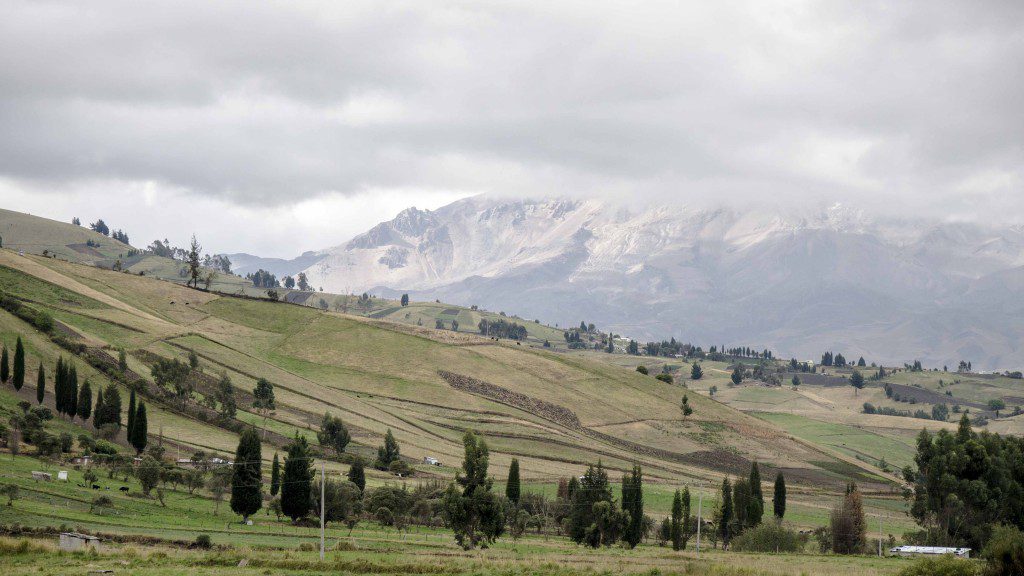
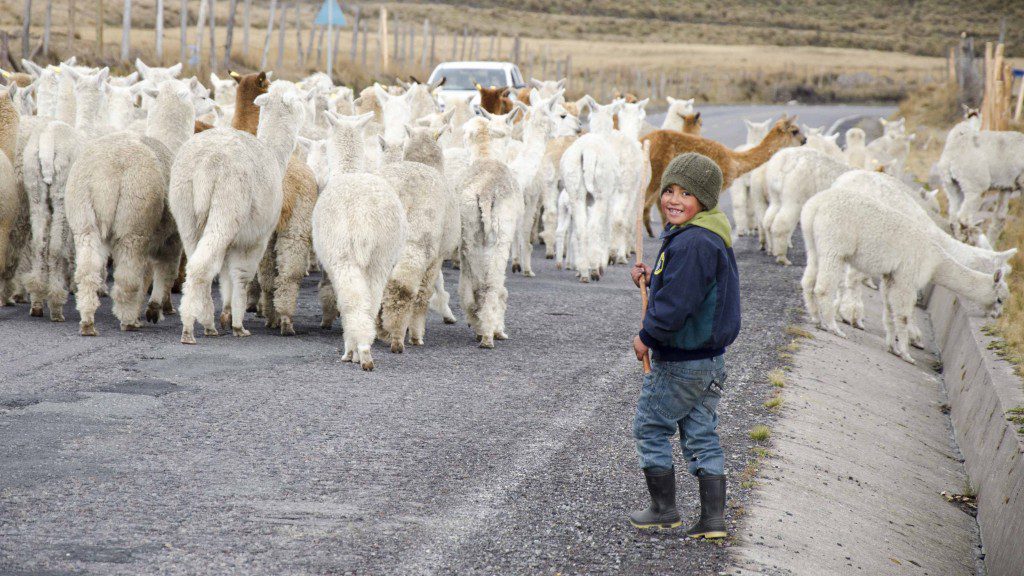
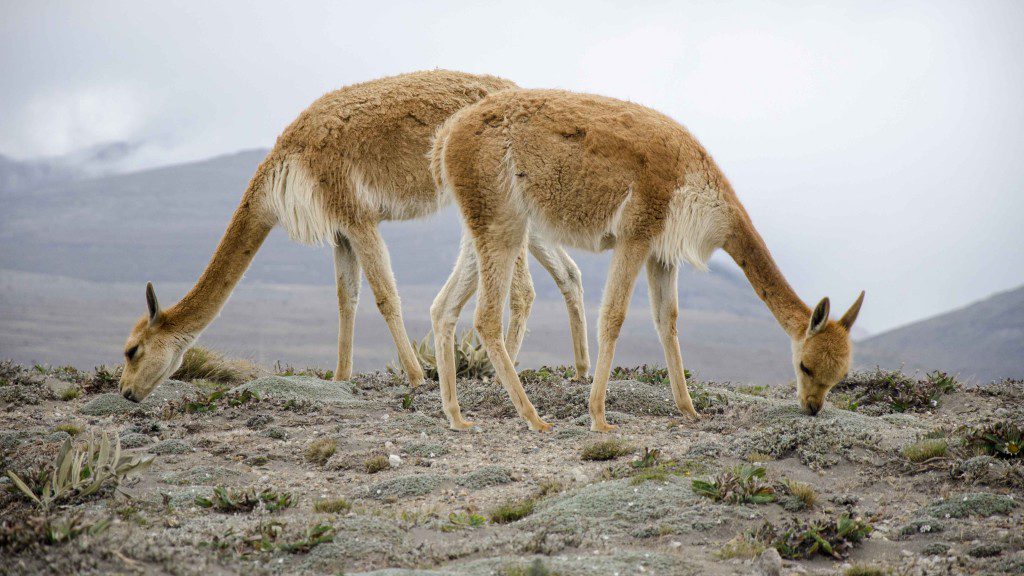
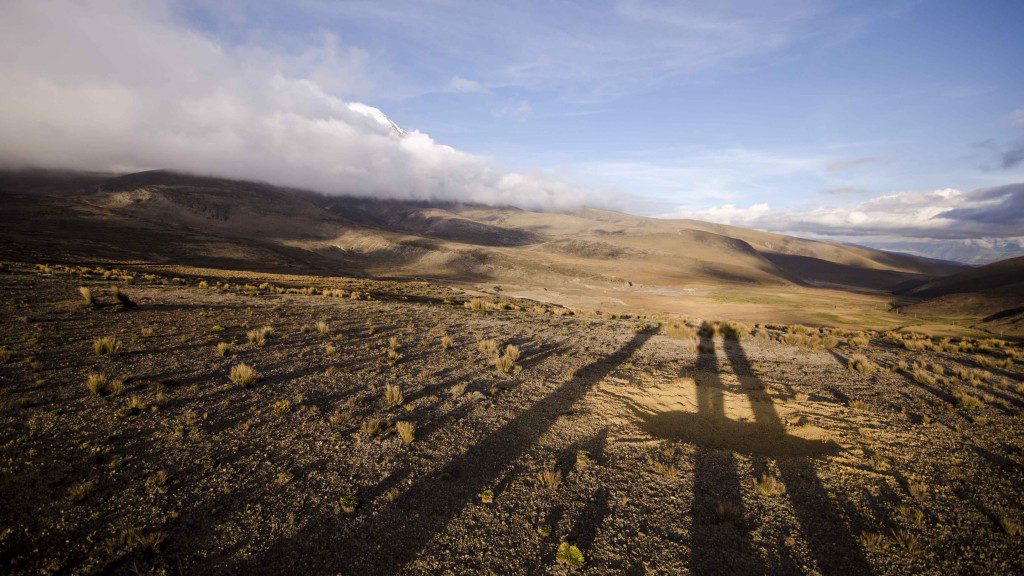


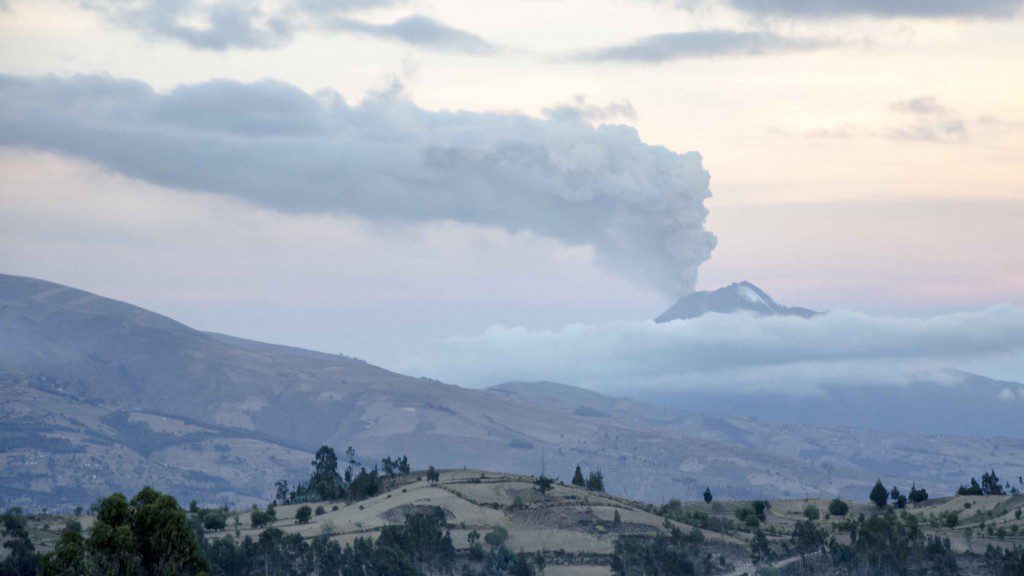











Great post and awesome pictures of Chimborazo! Just one thing more about Chimborazo. Its location along the equatorial bulge makes its summit the farthest point on the Earth’s surface from the Earth’s center 2 Km. higher than Mount Everest!
We invite you to watch more cool pics of Chimborazo and Riobamba in our website http://www.riobamba.co